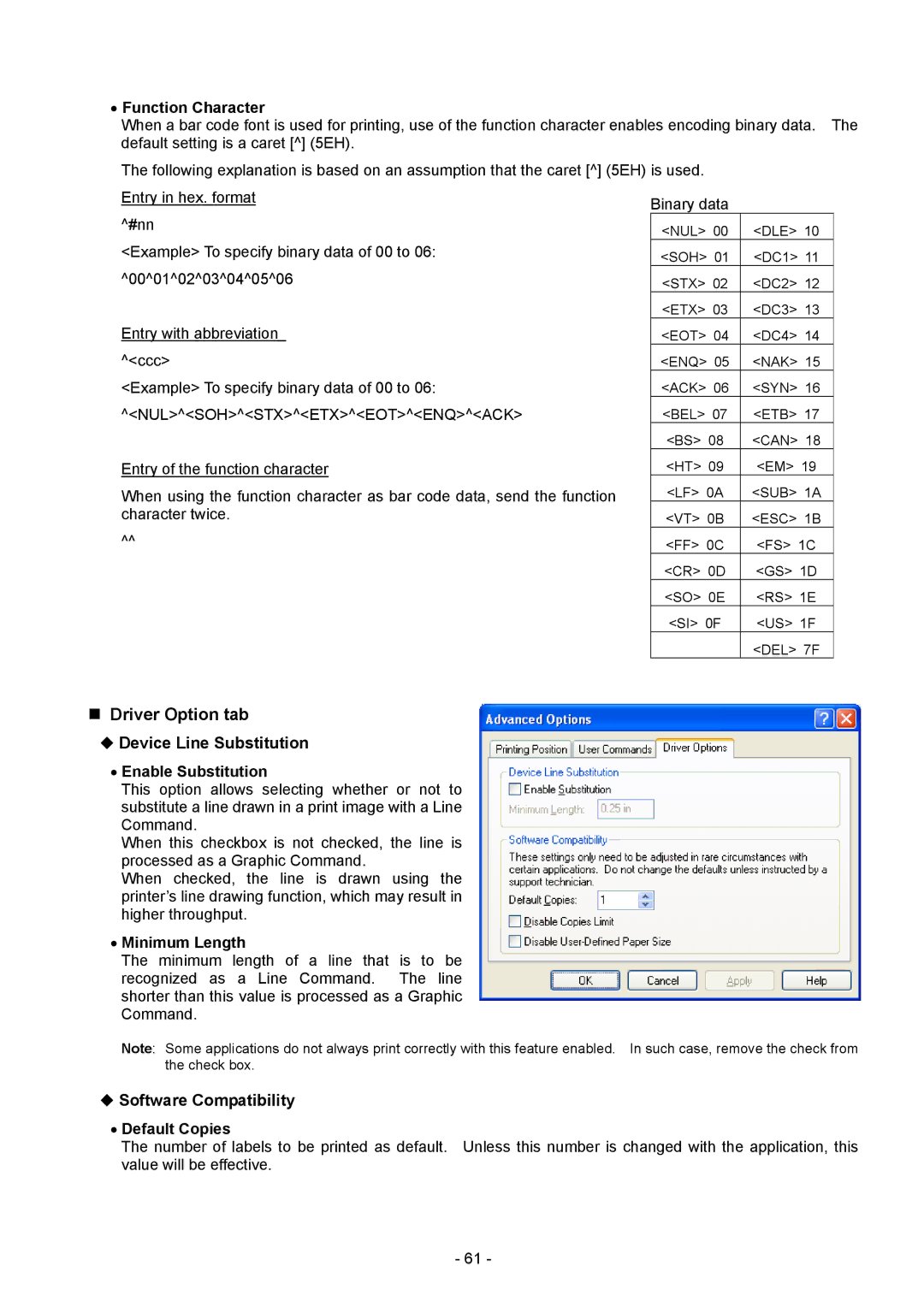
•Function Character
When a bar code font is used for printing, use of the function character enables encoding binary data. The default setting is a caret [^] (5EH).
The following explanation is based on an assumption that the caret [^] (5EH) is used.
Entry in hex. format
^#nn
<Example> To specify binary data of 00 to 06: ^00^01^02^03^04^05^06
Entry with abbreviation
^<ccc>
<Example> To specify binary data of 00 to 06: ^<NUL>^<SOH>^<STX>^<ETX>^<EOT>^<ENQ>^<ACK>
Entry of the function character
When using the function character as bar code data, send the function character twice.
^^
Binary data
<NUL> 00 | <DLE> | 10 |
<SOH> 01 | <DC1> 11 | |
<STX> 02 | <DC2> 12 | |
<ETX> 03 | <DC3> 13 | |
<EOT> 04 | <DC4> 14 | |
<ENQ> 05 | <NAK> 15 | |
<ACK> 06 | <SYN> 16 | |
<BEL> 07 | <ETB> 17 | |
<BS> 08 | <CAN> 18 | |
<HT> 09 | <EM> 19 | |
<LF> 0A | <SUB> 1A | |
<VT> 0B | <ESC> 1B | |
<FF> 0C | <FS> 1C | |
<CR> 0D | <GS> 1D | |
<SO> 0E | <RS> 1E | |
<SI> 0F | <US> 1F | |
| <DEL> 7F | |
Driver Option tab
Device Line Substitution
•Enable Substitution
This option allows selecting whether or not to substitute a line drawn in a print image with a Line Command.
When this checkbox is not checked, the line is processed as a Graphic Command.
When checked, the line is drawn using the printer’s line drawing function, which may result in higher throughput.
•Minimum Length
The minimum length of a line that is to be recognized as a Line Command. The line shorter than this value is processed as a Graphic Command.
Note: Some applications do not always print correctly with this feature enabled. In such case, remove the check from the check box.
Software Compatibility
•Default Copies
The number of labels to be printed as default. Unless this number is changed with the application, this value will be effective.
- 61 -
